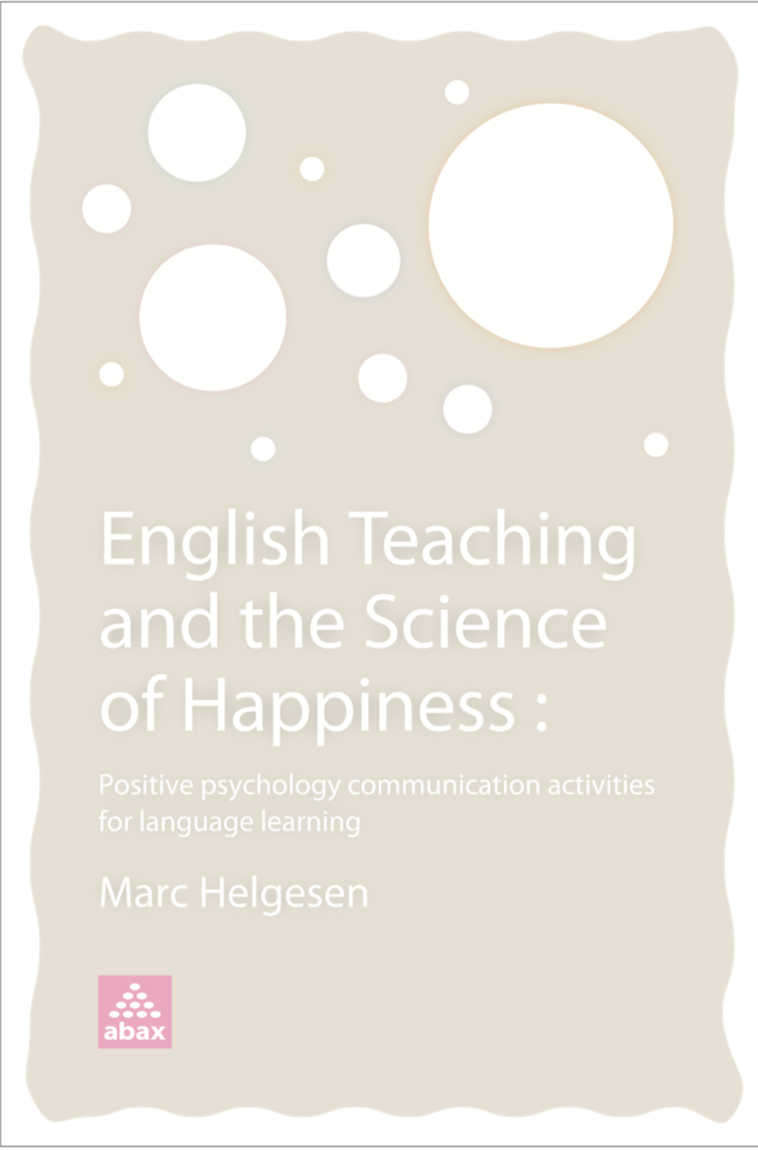
A resource of practical positive psychology activities that can be put to work in classrooms of any level. Developing classrooms of happy, mentally healthy, language learners.
A resource of practical positive psychology activities that can be put to work in classrooms of any level. Why positive psychology in the language classroom? As author, Marc Helgesen points out in the introduction.
"University of California researcher and positive psychology pioneer Sonja Lyubomirsky identified “Eight steps toward a more satisfying life” (2005, p. 32-33). They are as follows:
When I saw Lyubomirsky’s list, which I paraphrased to make it more accessible for learners, what struck me is that most of the things on it are similar to things we are already doing in many language classes. “Friends and family” and “health” are standard topics in many elementary-level classes. “Remember good things in your life” – that’s grammar. It demands some sort of past tense. “Notice good things as they happen” requires the present. “Thanking” and “Forgiving” are language functions, often carried out with fixed language routines.
If we are doing similar things anyway, why not do them in a way that focuses on and elicits positive emotion? They go so much deeper than bland topics like, “What’s your favorite sports team” and “Who’s your favorite movie star” common in so many ELT textbooks. We can consciously add positive psychology ideas and strategies in our classes. Positive psychology looks for – and tests – specific interventions (as an language teacher, think “activities” or “tasks”) that result in increased positive emotion."
| Level | ISBN | Included with text | Price |
|---|---|---|---|
| ¥0 (¥0) |